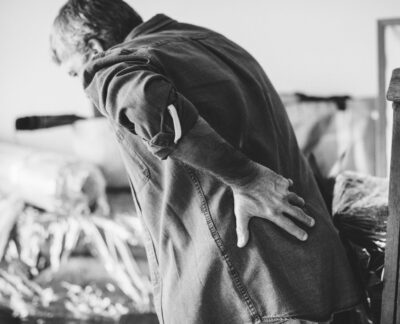
Your neck and back are highly susceptible to damage from the physical force of a car accident. For this reason, neck and back injuries are some of the most common you can experience after a crash. Even at lower speeds, there are a number of factors that contribute to these types of injuries.
How do Neck and Lower Back Injuries Happen After a Car Accident?
The human body is simply not designed to handle the trauma of car accidents. You can sustain injuries to any part of the body during an accident, but the force of the crash often puts the most pressure on your neck and back.
Let’s say you are driving and another car rear-ends your vehicle:
- The inertia from the impact forces everything in your vehicle—including your body—to move forward
- Since you are inside a vehicle with limited space, the momentum of your body is abruptly stopped by different areas inside the car, such as your seat belt and the dashboard
- These sudden motions force your head and neck quickly forward and then back, which can easily cause damage to your head, neck, and back
Neck and lower back injuries can also happen if you are thrown from the car during impact or collide with anything else inside or outside of your vehicle. No matter how you get your injury, there are different reasons you might experience pain in these areas after your accident.
Get the strong arm
Common Causes of Neck and Lower Back Pain from a Car Accident
To get treatment for your pain, you will need to know what’s causing it. Below are some of the most common neck and lower back injuries and how they may cause pain after a car accident.
Whiplash
The quick back-and-forth movement of the head and neck during an accident is often called whiplash. Whiplash can include any injuries to the neck, back or spine resulting from sprains, tears, fractures or herniated discs. These types of injuries can become very painful and greatly affect your quality of life, so prompt treatment is important.
Chronic Neck Pain
There are many things that can cause neck pain in the hours, days and weeks after a car accident.
Shorter-term pain is usually caused by strain to muscles and connective tissue in the neck. If the pain lasts for more than two to three months, the cause may be deeper issues like damage to a facet joint or disc:
- The facet joint is typically located to the left or right of the back of the neck. Sometimes it feels like muscle pain. Facet joint pain does not show up on imaging tests, so the doctor must do a medial branch nerve block injection to find out the source of pain.
- Disc injuries can also happen during a car accident, leading to chronic pain. The disc is responsible for maintaining the motion of the neck. Disc injury can also push on nerves and cause neck or arm pain.
Lumbar Spine Injuries
A car accident can put excessive force on the lumbar region of your spine, also known as your lower back. Your lumbar spine anatomy consists of five different vertebrae (the interlocking bones that form your spine). Your doctor will usually diagnose a lumbar spine injury through physical examination and by asking questions.
When trauma happens, such as from a car crash, the muscles, tendons, and ligaments in your lumbar spine can stretch and cause a lot of pain. When actual damage is done, it’s considered a sprain. You may have bruising, swelling, tenderness and limited range of motion.
Spinal Stenosis
Spinal stenosis is the compression of the small spinal channel that holds your spinal cord and nerves. This can happen naturally as you age, but it’s also common during traumatic events like car accidents. This pressure on the nerves can cause pain, numbness or weakness.
Spinal Cord Injuries
Spinal cord injuries can be very serious. Your spinal cord is a long, thin system of tissues that goes from your brainstem to your lumbar area (lower back). Pain from a spinal cord injury can result from damage to the spinal cord itself or the discs, vertebrae or ligaments in your spinal column.
Damage to your spinal cord can include symptoms like pain, bruising, pressure, numbness, full or partial paralysis, loss of mobility and long-term disability. It’s important to see a doctor as soon as possible about any suspected issues and to consult a spinal cord injury lawyer.
Herniated Discs
You have discs in your spine that act as cushions, protecting your spine and keeping vertebrae apart. When a disc gets knocked out of place in a car accident, it’s called a herniated disc.
Herniated discs cause pain by putting pressure on your nerves and spinal cord. Two common signs of a herniated disc are:
- Sudden and severe pain in the lower back; and/or
- Numbness in the legs
If you feel pain, pressure, numbness or anything else after a car accident, see a doctor right away. It’s better to get checked out and treated now before the condition becomes more serious over time.
Talk to a Car Accident Lawyer About Your Crash for Free
John Foy & Associates can help protect your legal rights after a car accident. If you were not at fault for the crash, you may be entitled to compensation for your medical expenses. Neck and lower back pain can lead to a lot of medical bills, and you shouldn’t have to pay for damages you didn’t cause.
Let’s talk during a FREE consultation. Contact us online to get started today.
404-400-4000 or complete a Free Case Evaluation form





